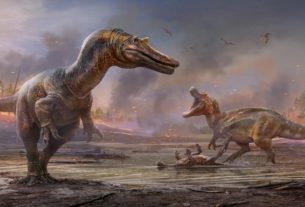The TESS satellite recently discovered a terrestrial planet evolving in the habitable zone of its star.
NASA’s exoplanet hunter – TESS – has been active since April. In orbit around the Earth, its main objective is to detect the presence of planets evolving around 200,000 nearby stars. Several worlds have been discovered in recent months, but most of them are gas giants. And almost all of them evolve either too close or too far from their host star.
A first for TESS
Recently, the satellite discovered three new planets around a small star just over 100 light years from Earth, in the Constellation Dorado. Follow-up studies by the Spitzer telescope, also in orbit, then confirmed that one of these worlds – YOU 700 d – is evolving in the habitable zone of its system. This is the first time that TESS has found such a planet.
“TESS was designed specifically to find Earth-sized planets orbiting nearby stars,” said Paul Hertz of NASA. Discovering TOI 700 d is therefore a key scientific discovery for the satellite. Confirming the size of the planet and its placement in the habitable zone is also another victory for Spitzer. ”
A corrected error
The three planets in the TOI 700 system had already been spotted by satellites before, but the star (TOI 700) was originally misclassified in the database. It appeared indeed to be “similar” to the Sun. In other words, the three planets also appeared larger and warmer than they really are. Fortunately, the error could be corrected.
“When we changed the parameters of the star, we realized that the outermost one evolves in the habitable zone,” explains Emily Gilbert, of the University of Chicago (United States). Furthermore, in 11 months of data, we have not recorded any violent eruption emanating from the star, which improves the chances that TOI 700 d can actually be habitable. “
We now know that the star is about half the size of the Sun, and that it is half as hot.
We also know that the innermost planet – YOU 700b – is almost the same size as Earth and that it is probably rocky. That the second planet – YOU 700 c – is 2.6 times larger than Earth and that it is probably made up of gas. And finally that YOU 700d, the outermost planet, is about 20% larger than Earth and is probably rocky.
Follow-up studies with more powerful instruments could in a few years make it possible to characterize more precisely this new world. One thinks in particular of the James Webb Telescope, whose launch is planned for 2021.
source: https://phys.org/news/2020-01-nasa-planet-hunter-earth-size-habitable-zone.html




